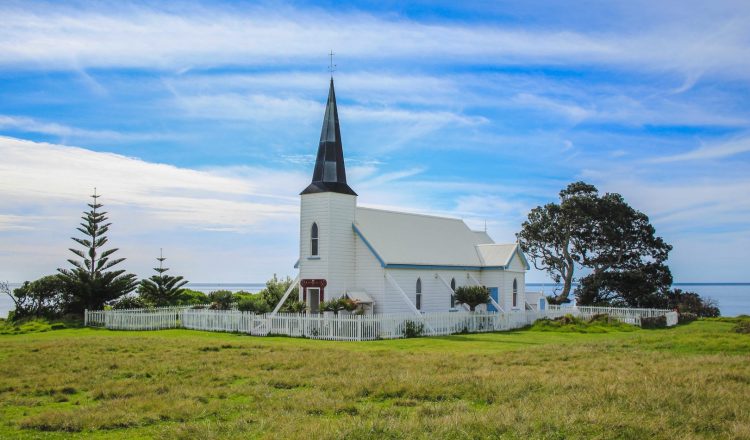Dân số
Có trụ sở tại Vịnh Plenty, Quận Opotiki hiện diện ở phía bắc New Zealand. Theo điều tra dân số tháng 6, huyện có dân số 9.720 người, trong khi dân số đô thị là 4.530 người. Trong tổng dân số, 51% là nữ giới, và 49% là nam giới. Dưới đây là sự phân tích của những người thuộc các nhóm tuổi khác nhau sống ở Opotiki.
Nhóm tuổi
| Tỷ lệ phần trăm | |
|---|---|
| 0-14 năm | 22.3% |
| 15-64 các năm | 59,1% |
| Trên 65 | 18,6% |
Rõ ràng, Opotiki có một dân số cân bằng tốt, với hầu hết trong số họ là trung niên. Thêm vào đó, một phần đáng kể dân số được thực hiện bởi những người thanh niên, làm cho thị trấn trở thành một nơi ở tuyệt vời cho sinh viên.
Các sắc tộc
Thị trấn này chủ yếu là nơi sinh sống của dân số Māori, chiếm tới 50% cư dân của thị trấn. Các sắc tộc chung bao gồm:
• Người châu Âu (50%)
• Tiếng Māori (63,7%)
• Các dân tộc Thái Bình Dương (3,5%)
• Người châu Á (2.8%)
• Những người khác (1%)
Nhìn chung, thị trấn là một sự pha trộn của những người từ các sắc tộc khác nhau đến với nhau để tạo thành một cộng đồng hài hòa.
• Người châu Âu (50%)
• Tiếng Māori (63,7%)
• Các dân tộc Thái Bình Dương (3,5%)
• Người châu Á (2.8%)
• Những người khác (1%)
Nhìn chung, thị trấn là một sự pha trộn của những người từ các sắc tộc khác nhau đến với nhau để tạo thành một cộng đồng hài hòa.
Spoiler title
Nhìn chung, Opotiki không phải là một thị trấn rất tôn giáo, nhưng nó có một dân số đáng kể của Kitô hữu. Nhìn chung, thị trấn là bao gồm cho người dân của hầu hết các tôn giáo.
| Tôn giáo | Tỷ lệ phần trăm |
|---|---|
| Anh giáo | 8% |
| Công giáo | 3.9% |
| Trưởng Lão | 9,3% |
| Các Kitô hữu khác | 15.1% |
| Người Hồi giáo | 1.5% |
| Phật tử | 0,4% |
| Các tôn giáo khác | 38.5% |
| Không có tôn giáo | 23% |
| Niềm tin Maori | 0,3% |
Thu nhập
Đa số người dân Quận Opotiki kiếm sinh kế của họ thông qua hoa hồng, tiền lương, tiền lương, và tiền thưởng. Từ đây, danh sách các nguồn thu nhập, theo thứ tự tỷ lệ phổ biến của chúng, được đề cập dưới đây:
• Cựu chiến binh lương hưu
• Tự làm việc
• Lãi suất, tiền thuê nhà, hoặc các khoản đầu tư khác
• Lợi ích cho mục đích trong nước
• Trợ cấp thất nghiệp
• Quyền lợi hoặc các khoản thanh toán của Chính phủ
• Trợ cấp sinh viên
• Thanh toán từ một công ty bảo hiểm
Đối với tỷ lệ việc làm, 43,3% dân số được tuyển dụng trong một công việc toàn thời gian, trong khi 14,5% đang làm một công việc bán thời gian. Còn lại 7,3% dân số thất nghiệp.
Người có việc làm chủ yếu làm việc trong các ngành công nghiệp sau:
• Nông lâm nghiệp
• Giáo dục và đào tạo
• Chăm sóc sức khỏe
• Thương mại bán lẻ
• Dịch vụ quản trị
• Sản xuất
• Xây dựng
• Thương mại bán buôn
• Chỗ ở và dịch vụ ăn uống
• Nghệ thuật và giải trí
• Khai thác mỏ (rất ít người)
• Cựu chiến binh lương hưu
• Tự làm việc
• Lãi suất, tiền thuê nhà, hoặc các khoản đầu tư khác
• Lợi ích cho mục đích trong nước
• Trợ cấp thất nghiệp
• Quyền lợi hoặc các khoản thanh toán của Chính phủ
• Trợ cấp sinh viên
• Thanh toán từ một công ty bảo hiểm
Đối với tỷ lệ việc làm, 43,3% dân số được tuyển dụng trong một công việc toàn thời gian, trong khi 14,5% đang làm một công việc bán thời gian. Còn lại 7,3% dân số thất nghiệp.
Người có việc làm chủ yếu làm việc trong các ngành công nghiệp sau:
• Nông lâm nghiệp
• Giáo dục và đào tạo
• Chăm sóc sức khỏe
• Thương mại bán lẻ
• Dịch vụ quản trị
• Sản xuất
• Xây dựng
• Thương mại bán buôn
• Chỗ ở và dịch vụ ăn uống
• Nghệ thuật và giải trí
• Khai thác mỏ (rất ít người)
Thời tiết
Opotiki nằm trên vĩ độ 38° Nam và có khí hậu ôn đới. Vào mùa hè, nhiệt độ lên đến giữa 20 độ C. Như vậy, huyện có nền văn hóa bãi biển đang bùng nổ. Vùng này chủ yếu là không có mây vào mùa đông, nhưng nhiệt độ không bao giờ giảm xuống dưới nhiệt độ đóng băng, làm cho khí hậu thích hợp để sống thoải mái.
Giáo dục
Đối với giáo dục, Opotiki có ba trường tiểu học. Đó là:
• Trường Ashbrook
• Trường Opotiki
• Trường Woodlands
Tất cả các trường đều là đồng giáo dục.
• Trường Ashbrook
• Trường Opotiki
• Trường Woodlands
Tất cả các trường đều là đồng giáo dục.

















































